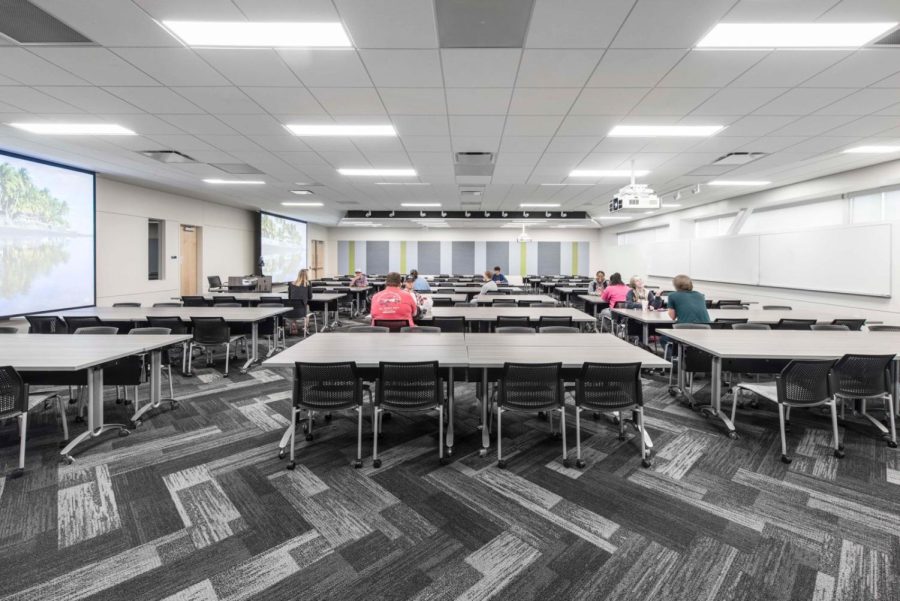(Opinion) Georgia Southern Synchronous Site Courses are Terrible
For just the base in-state tuition, it is $2,732 to attend Georgia Southern in 2022, if you are staying on campus, it will cost you upward of $9,250, and I am only listing the in-state costs.
In addition to student tuition and fees, the university received $22,363,915 from private fundraising in 2022. When taking a look at the 990 Public Disclosure form from 2021, it details that by the end of 2021, the university had $119,257,021 in net assets.
The reason for referencing those figures is because it should be highlighted just how much money this university has at its disposal. Money that can be used to ensure students get the most comprehensive education possible.
However that isn’t the case; instead, Georgia Southern has a serious problem with its synchronous site courses.
Everyone that I have had a conversation with regarding site-synchronous classes detests it. The issue comes up enough in my interactions with others that I felt compelled to write this article. This includes my conversations with professors and students alike.
I would even go so far as to label site synchronous classes as a painful experience that I hope no one would have to experience in their collegiate career.
I took a synchronous site course in my second year at university.
I was excited because the concept was interesting, and I would get a chance to interact and take a class with my classmates in Statesboro without the class being online. I would be able to see their faces and engage in actual discourse with them, or at least I thought I would be able to.
Instead, the class was unhinged; the first day of the class included 15 minutes of my professor trying to mute the distracting noise coming from Statesboro. The professor’s focus was on the whiteboard. It was the medium for how we could communicate with Statesboro, but it was hypersensitive to noise.
This means that if someone dropped a pin, moved a sheet of paper or anything at all. The board would react with a reverberating sound. May it not be anything that really is noisy such as grass being cut, then the board would sound like a jet engine.
This forced my professor to mute Statesboro during class and to unmute them if a question was directed toward them. But this was not the only issue. The professor would also go through technical issues when trying to play videos or show PowerPoints of information.
You would think that with the hypersensitivity to noise that the board would be able to have clear and coherent audio while people are talking, but it is quite the contrary. You can barely hear the other side, and professors are forced to be louder than usual to ensure that students on the other end can hear them.
Not to mention that the technology that the board uses is motion sensitive, so if you do end up mistakenly dropping a pin, the camera will zoom in on your face for the class on the other end to see every single pimple on your face.
I would also like to point out that this was a professor that I would say was proficient with using technology; in my previous course with the professor, there were no major issues with technology. In a course I took afterward with the professor, there were no issues because it wasn’t a synchronous site course.
May it not be a professor with no knowledge of technology, then I am afraid to say class would not occur unless an individual from IT came in to assist, which I have also experienced while taking a synchronous site class.
One of my more recent experiences with a synchronous site class included a situation where my Liberty classmates were locked out of the room where the class was held remotely. My teacher had to call Liberty officials to unlock the door — which was a task in itself.
The paramount issue at hand, though, is that students are not gathering enough information from these synchronous site classes. There may not be any data to support this notion, but I feel like it is apparent.
How can you possibly learn in such a disruptive environment that is not conducive to education? It is impossible to do so.
Professors’ full attention cannot be given to students because they have to focus on the technical issues that, if left unaddressed, would prevent the class from happening.
How are students from other campuses learning if they can’t ask questions in addition to the majority of the discussion being dominated by students in the classroom with the professor?
How has this problem not been brought to the forefront? How will Georgia Southern respond to this article? What is the remedy to this issue? Will it be addressed promptly?
These are questions that I have that I doubt will be answered, and I’m just a student journalist who doesn’t know the ins and outs of how a university is run. But I know what I have experienced and what I have heard from my classmates and professors when discussing synchronous site courses.
Let me also clarify that Georgia Southern does a lot of good, one of the most recent being the Eagle Experience this year and the constant improvements made. I also think that the university is going in the right direction, and I have hope for the future.
But still, to put it simply, synchronous site classes are terrible and need to be eliminated or receive a severe overhaul.

An award-winning senior Communications major from Atlanta, Georgia, Jabari is passionate about bringing diverse perspectives to the news. He has been with...






Karla Jennings • Aug 26, 2022 at 12:34 pm
You got our attention. What’s the next step? What can be done about the difficulties with technology for site sync classes?
Martavius Dallas • Aug 22, 2022 at 12:53 pm
I agree so much on this topic
Devin Green • Aug 22, 2022 at 10:53 am
Outstanding work
Derick Anglin • Aug 22, 2022 at 8:21 am
Great article